 W
W2-XL is an educational toy robot that was marketed from 1978–1981 by the Mego Corporation, and from 1992–1995 by Tiger Electronics. 2-XL was the first "smart-toy" in that it exhibited rudimentary intelligence, memory, gameplay, and responsiveness. 2-XL was infused with a "personality" that kept kids focused and challenged as they interacted with the verbal robot. Learning was enhanced via the use of jokes and funny sayings as verbal reinforcements for performance. 2-XL was heralded as an important step in the development of toys, particularly educational ones. 2-XL won many awards, and Playthings, a toy industry magazine, placed 2-XL on its 75th anniversary cover as one of the industry's top-ten toys of all time. The 2-XL name is a pun of the phrase "To Excel".
 W
WThe Armatron is a toy robot which was made by TOMY and distributed by Radio Shack in the United States since 1984. It consists of a crane-like arm which picks up small objects by the user manipulating two attached joysticks. Its shape resembles industrial robots of the 1980s, though it is strictly user-controlled, with no automation built in. The arm has six degrees of freedom: wrist rotation (unlimited), vertical wrist flexing, horizontal elbow bending, shoulder horizontal rotation (unlimited), shoulder elevation, and the opening (releasing) and closing (grasping) of the two-fingered end-effector.
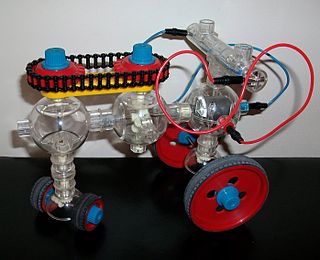 W
WCapsela is a construction toy brand consisting primarily of gears and motors in spherical plastic capsules that can be connected to form various static or dynamic toys suitable for land or water. The capsules typically have six hollow octagonal connectors protruding, where an octagonal sleeve piece bridges between two capsules. The hollow connection pegs on a capsule can have electrical or rotary adapters inside, reaching into the next capsule. There are electric motor capsules, gear capsules, switch capsules, pontoon capsules, and others; there are also battery holders, wheels, propellers, impellers, lights, wires, and miscellaneous supporting pieces.
 W
WDataman was an educational toy calculator with mathematical games to aid in learning arithmetic. It had an 8-digit vacuum fluorescent display (VFD) and a keypad. Dataman was manufactured by Texas Instruments and was launched on 5 June 1977.
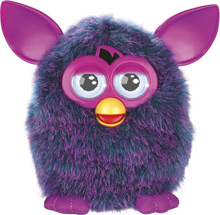 W
WFurby is an American electronic robotic toy that was originally released in 1998 by Tiger Electronics. It resembles a hamster or owllike creature and went through a period of being a "must-have" toy following its holiday season launch, with continual sales until 2000. Over 40 million Furbies were sold during the three years of its original production, with 1.8 million sold in 1998, and 14 million in 1999. Its speaking capabilities were translated into 24 languages.
 W
WLeapPad is a range of tablet computers developed for children. Various models of the LeapPad have been developed since 1999.
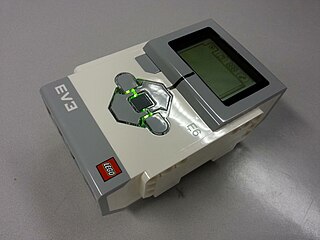 W
WLego Mindstorms EV3 is the third generation robotics kit in Lego's Mindstorms line. It is the successor to the second generation Lego Mindstorms NXT 2.0 kit. The "EV" designation refers to the "evolution" of the Mindstorms product line. "3" refers to the fact that it is the third generation of computer modules - first was the RCX and the second is the NXT. It was officially announced on January 4, 2013 and was released in stores on September 1, 2013. The education edition was released on August 1, 2013. There are many competitions using this set. Among them are the FIRST LEGO League Challenge and the World Robot Olympiad, sponsored by Lego.
 W
WLego Mindstorms is a hardware and software structure which is produced by Lego for the development of programmable robots based on Lego building blocks. Each version of the system includes a computer Lego brick that controls the system, a set of modular sensors and motors, and Lego parts from the Technic line to create the mechanical systems.
 W
WLite-Brite is a toy that was originally marketed in 1967. It consists of a light box with small colored plastic pegs that fit into a panel and illuminate to create a lit picture, by either using one of the included templates or creating a "freeform" image on a blank sheet of black paper. There are eight peg colors: red, blue, orange, white (clear/colorless), green, yellow, pink, and violet (purple).
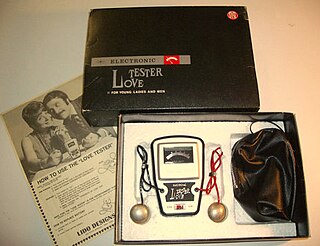 W
WThe Love Tester is a novelty toy made by Nintendo in 1969. Designed "for young ladies and men", the device tries to determine how much two people love each other. To operate the device, both users grab one of the connected spherical metal sensors with one hand and hold each other's hands with the other; then, the meter on the device displays, on a scale between 1 and 100, their "love score".
 W
WMakey Makey: An Invention Kit for Everyone is an invention kit designed to connect everyday objects to computer keys. Using a circuit board, alligator clips, and a USB cable, the toy uses closed loop electrical signals to send the computer either a keyboard stroke or mouse click signal. This function allows the Makey Makey to work with any computer program or webpage that accepts keyboard or mouse click inputs.
 W
WMilton is an electronic talking game. According to the patent, Milton was the first electronic talking game that allowed two people to play against each other. Previously released devices of this type, such as Speak & Spell by Texas Instruments, were known primarily as teaching devices rather than competitive games.
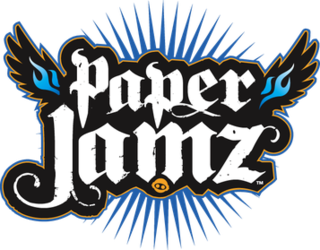 W
WPaper Jamz was a collection of musical toys, produced by WowWee. Introduced in 2010, Paper Jamz were paper-thin musical toys, which included guitars, microphones, keytars, drum kits, and amplifiers. They were also marketed as "Instant Rock Star" instruments.
 W
WPlaymation is a system of toys, wearables, and companion apps from Disney and Hasbro. The system is designed to keep kids active, replacing screens with pretend play. Players can receive missions through a companion app, and track scores and accomplishments.
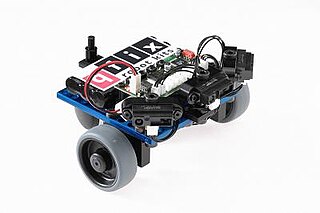 W
WQfix robot kits are an education tool for teaching robotics. They are used in schools, high schools and mechatronics training in companies. The robot kits are also used by hobby robot builders. The qfix kits are often found in the RoboCup Junior competition where soccer robots are built of the kit's components.
 W
WSimon is an electronic game of memory skill invented by Ralph H. Baer and Howard J. Morrison, working for toy design firm Marvin Glass and Associates, with software programming by Lenny Cope. The device creates a series of tones and lights and requires a user to repeat the sequence. If the user succeeds, the series becomes progressively longer and more complex. Once the user fails or the time limit runs out, the game is over. The original version was manufactured and distributed by Milton Bradley and later by Hasbro after it took over Milton Bradley. Much of the assembly language code was written by Charles Kapps, who taught computer science at Temple University and also wrote one of the first books on the theory of computer programming. Simon was launched in 1978 at Studio 54 in New York City and was an immediate success, becoming a pop culture symbol of the 1970s and 1980s.
 W
WThe Speak & Math was a popular electronic toy created by Texas Instruments in 1980. Speak & Math was one of a three-part talking educational toy series that also included Speak & Spell and Speak & Read. The Speak & Math was sold worldwide. It was advertised as a tool for helping young children to become better at mathematics. The Speak & Math had a distinct gray with blue and orange color scheme.
 W
WSpeak & Read is an electronic learning aid made in 1980, by Texas Instruments. Speak and Read was part of a family of learning toys i.e. "Speak & Math" and "Speak & Spell".
 W
WThe Speak & Spell line is a series of electronic hand-held child computers by Texas Instruments that consisted of a TMC0280 linear predictive coding speech synthesizer, a keyboard, and a receptor slot to receive one of a collection of ROM game library modules. The first Speak & Spell was introduced at the summer Consumer Electronics Show in June 1978, making it one of the earliest handheld electronic devices with a visual display to use interchangeable game cartridges. The company Basic Fun brought the classic Speak & Spell in 2019 although with some minor changes
 W
WTalkboy is a line of handheld voice recorder and sound novelty toys manufactured by Tiger Electronics in the 1990s.
 W
WTeddy Ruxpin is an animatronic children's toy in the form of a talking 'Illiop', a creature which looks like a bear. The toy's mouth and eyes move while he reenacts stories played on an audio tape cassette deck built into its back. It was created by Ken Forsse with later assistance by Larry Larsen and John Davies, and the first version of the toy was designed by RKS Design. Later versions have a digital cartridge in place of a cassette. At the peak of its popularity, Teddy Ruxpin became the best-selling toy of 1985 and 1986, and the 2006 version was awarded the 2006 Animated Interactive Plush Toy of the Year award by Creative Child Magazine. A cartoon based on the characters debuted in 1986. Teddy's extreme popularity in 1986 buoyed the controversial launch of the Nintendo Entertainment System, also distributed by Worlds of Wonder.
 W
WTOSY is a Vietnamese robots manufacturer which is based in Hanoi, Vietnam. The company specializes in designing and manufacturing robots and smart toys. Its current commercial products are DiscoRobo, TOOP and AFO.
 W
WA toy train is a toy that represents a train. It is distinguished from a model train by an emphasis on low cost and durability, rather than scale modeling. A toy train can be as simple as a pull toy that does not even run on track, or it might be operated by clockwork or a battery. Many of today's model trains might be considered as toy ones as well, providing they are not strictly scale ones in favor of a robustness appropriate for children.
 W
WTracy Island is the secret headquarters of the International Rescue organisation in the British 1960s Supermarionation television series Thunderbirds and its adaptations. In the original series, the heavily-camouflaged island is located in the South Pacific Ocean and is home to the Tracy family, scientists Brains and Tin-Tin and housekeeper Kyrano.
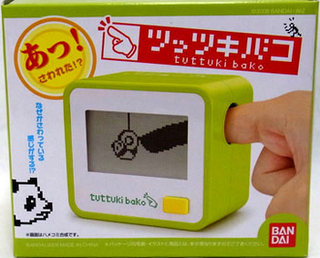 W
WTuttuki Bako (ツッツキバコ) is a roughly cubic hand-held electronic game created by Bandai in 2008. The game comprises five mini-games, and a resettable alarm clock. While the minigames are rather simplistic, Tuttuki Bako has received international acclaim for its unique means of control and the game has been put forward as an archetypal example of Akiba-kei and Japanese gadgetry in general.
 W
WThe VideoNow is a portable video player produced by Hasbro and released by their subsidiary Tiger Electronics in 2003. The systems use discs called PVDs, which can store about 30 minutes of video, the length of an average TV show with commercials, so each PVD contains only one episode, with trailers at the end to use the leftover time on most PVDs, including Nickelodeon PVDs. Video data is stored on the left audio channel with audio on the right channel, thus making it impossible to achieve stereo sound on the system, which only plays in black and white. The video plays at about 15 frames per second. Most of the shows were from Nickelodeon, such as SpongeBob SquarePants and The Fairly OddParents, and later they released shows from Cartoon Network, such as Ed, Edd n Eddy and Dexter's Laboratory. A small amount of movies were also released on the system, but due to the limited space on a PVD, said movies would have to be released on at least three discs, depending on the length of said film.
 W
WWalkie Bits are little plastic toy turtles that sing, dance and walk. They are made by Takara, a Japanese toy company in June 2005. Walkie Bits are very small, only about five centimeters, and come in a variety of different colors and "flavors" like "blue soda" and "green pineapple".
 W
WYak Bak was a line of handheld electronic voice recorder toys developed by Ralph Osterhout at Team Machina for Yes! Gear in the mid-to-late 1990s. Several versions of the toy were developed which include the Yak Bak, Yak Bak 2, Yak Bak WarpR, Yak Wakky, Yak Bak SFX, and the Yak Bakwards. Some of these models also came in pen form as part of the "Power Penz" series. The Yak Bak was intended to be a compact, more affordable competitor to the Talkboy introduced by Tiger Electronics in 1993.
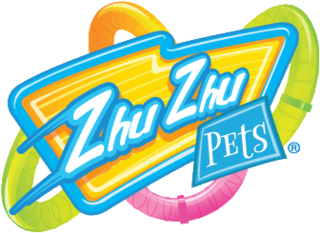 W
WZhuZhu Pets is an American line of plush robotic hamster toys created by Cepia LLC in 2009.